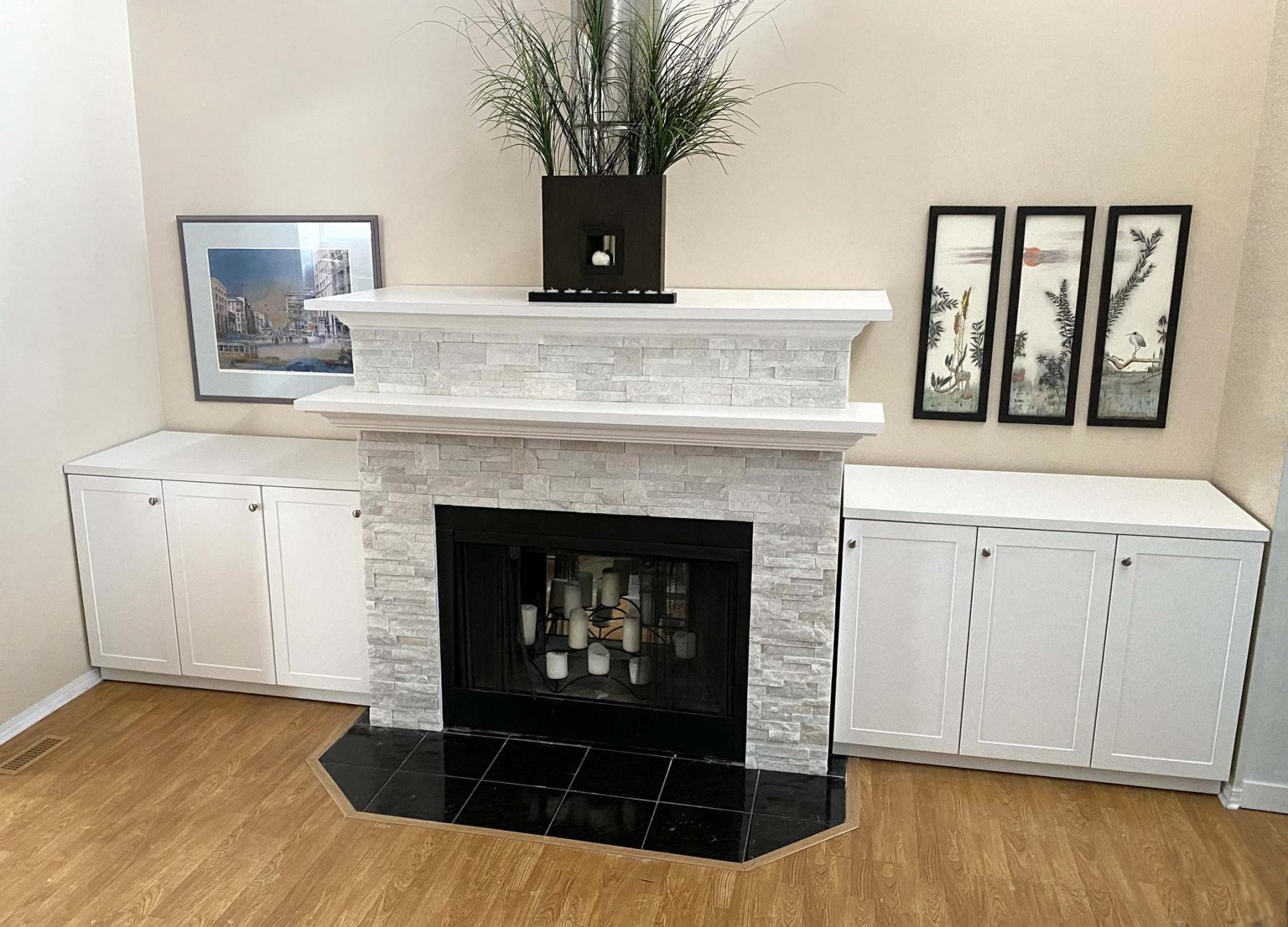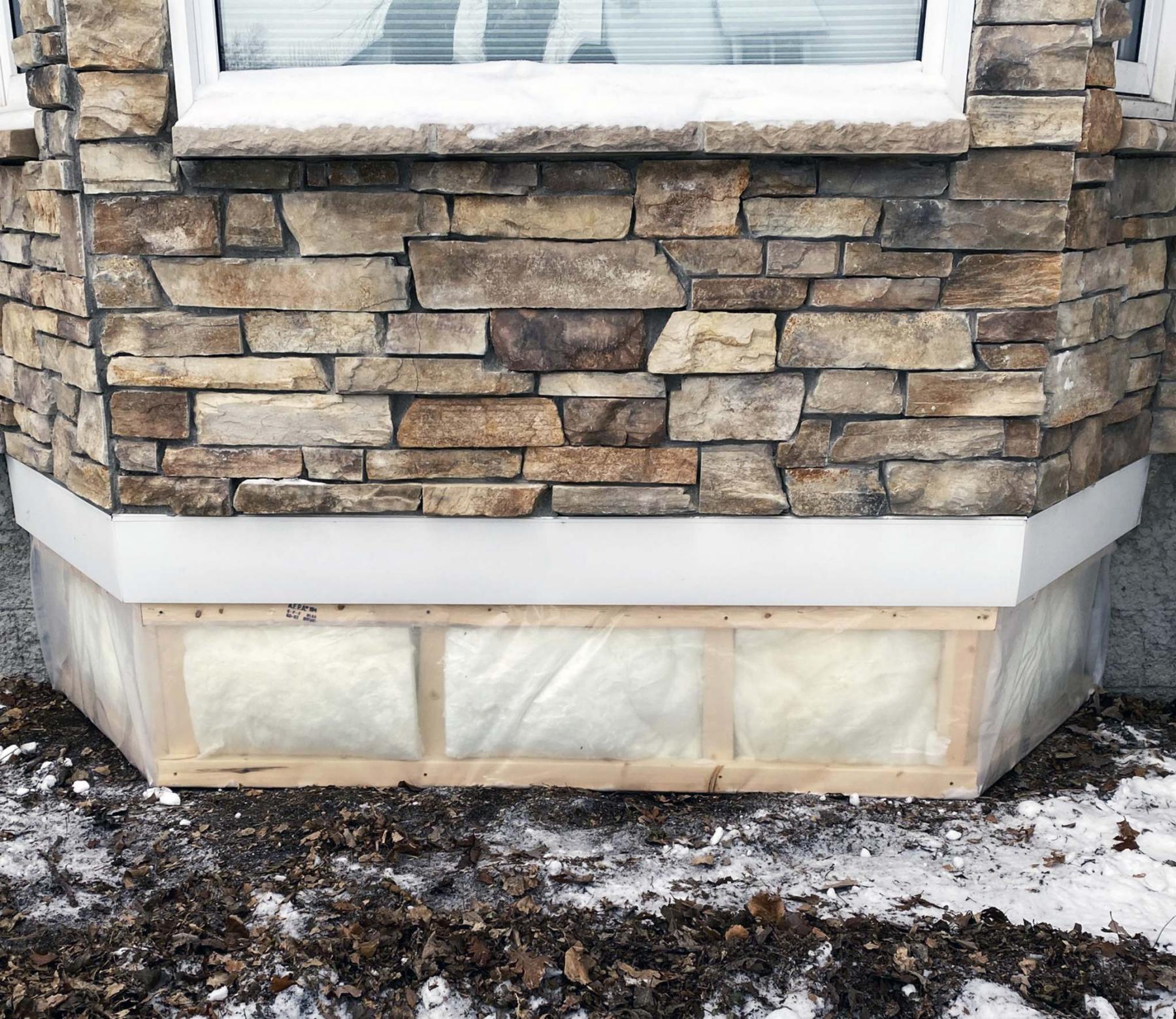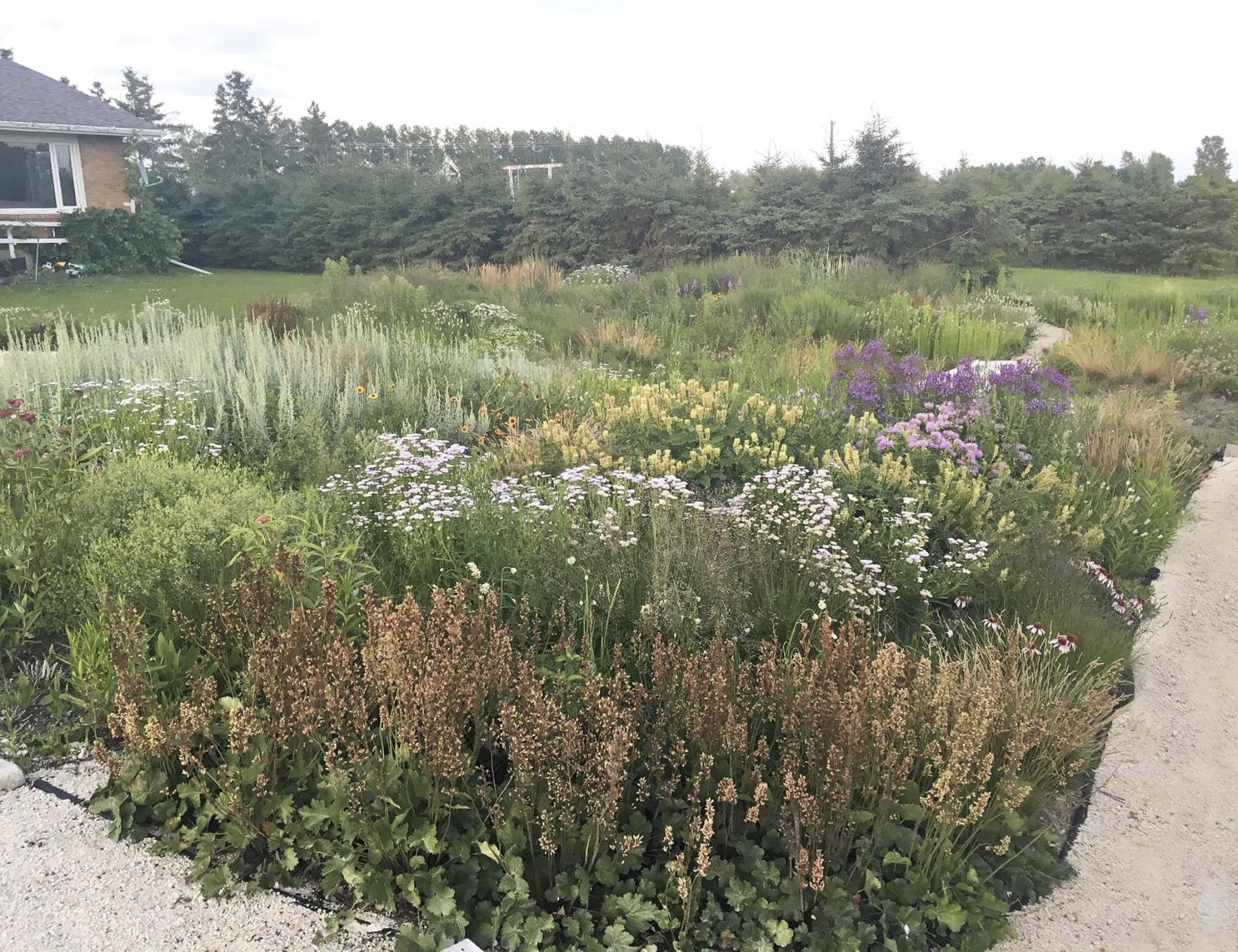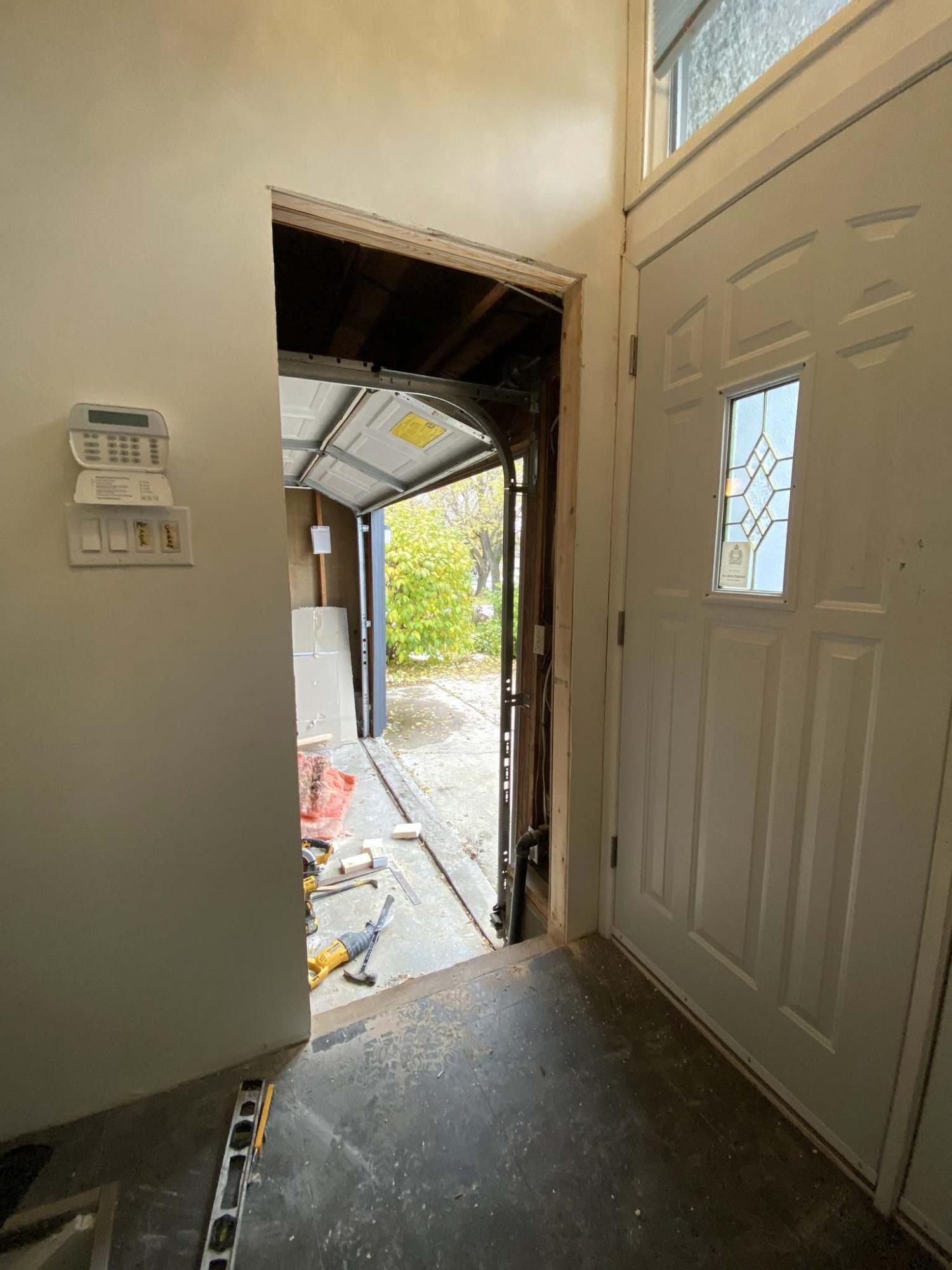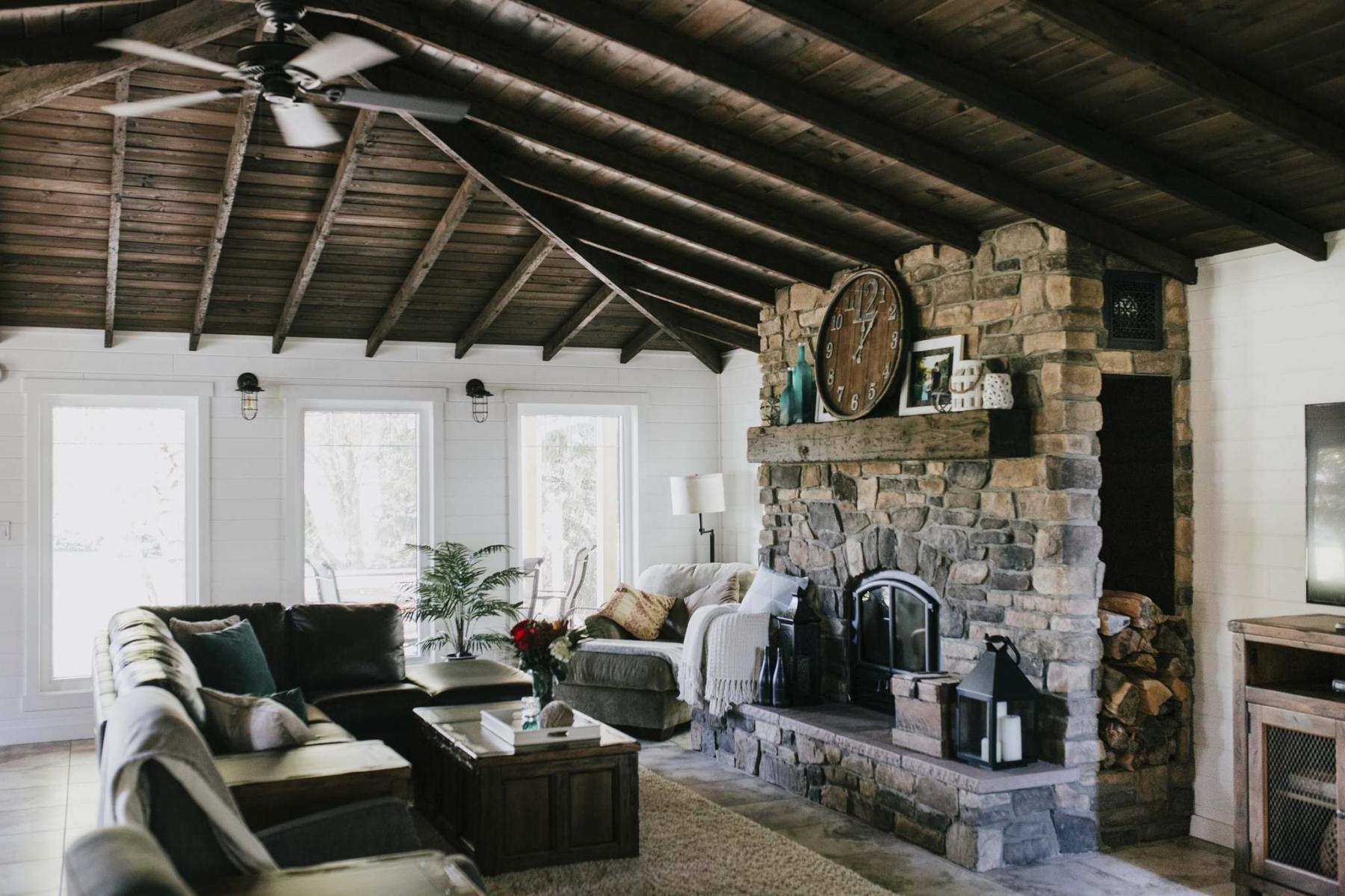Renovation & Design
Renovation & Design
Extreme cold likely cause of water line woes
We live in a two and a half story home in River Heights built in 1923. A few years ago we had our foundation dug up, repaired and the walls sealed down to the footing. Our foundation drainage was upgraded, the gap used for doing the repairs backfilled with gravel and then soil. Due to the dry summers, I water the soil around the foundation and the trees on our property in the fall, including last year. However, as we have had such cold winters these past few years, we have ended up with a frozen water supply line to our home, which I believe is occurring at the entry of the supply line at the footing.
Last year we again had a frozen water supply line at the entry point to our home and the most likely culprit is the soil pulling away from our foundation. This was pointed out by the city, they thought the cold air going down the foundation wall was freezing the water pipe quicker. Prior to the foundation repairs, we didn’t get a frozen water line.
So, even though precautions were taken, by watering the soil and trees in the fall, the soil still pulled back from the foundation.
What in your opinion can be done to minimize this issue in the future? Currently we are having to run our water during the cold months to prevent the line from freezing again. Thank-you for your assistance in this matter.
– Dave Mainprize
Answer: Dealing with shrinking soil around your foundation by hydrating it is the correct approach, but it may not be the only cause of your freezing water pipes. Determining that may be beyond your capacity and leaving the water dripping, or installing a heat trace cable to the pipe, may be the only solutions to prevent a reoccurrence.
Two phenomena that have been happening to homes in our area in the last few years are common, but may be unrelated. Freezing underground water pipes and shrinking soil have plagued many homes and unfortunately yours has been affected by both issues. The shrinking soil is due to recent dry summer weather the last half decade or more, which causes our expansive soil to pull away from foundation walls. This may leave a small crevice between the two, which can allow rainwater and pests to penetrate along the foundation, but rarely does it cause much other concern.
The two-prong solution to preventing or closing this gap is to water continuously along the outside of your home, and add new topsoil and seed after the gap disappears. While autumn watering is prudent before the big freeze, that is not sufficient. Regular watering from early summer until Halloween may be required if there is not sufficient rain to partially saturate the soil. The goal is to prevent the soil shrinking enough to actually pull away from the foundation in the first place, rather than trying to hydrate the dirt once it is bone dry and shrunken. My rule of thumb is to watch the grass or vegetation in this area and if it begins to wither, or lose its lush green colouring, then it is time to take out the hose. Also, most homes will require adding topsoil around the foundation every few years, due to shrinkage and erosion, especially with the recent dry weather. Since your home has newly installed drainage stone outside, ensuring you have a good depth to the soil cap on top should be a priority.
So, if you can manage to keep enough moisture in the soil in this area to prevent a gap from forming, you may be able to determine if this may be a factor, if your water line does not freeze next winter. Otherwise, piling up a bit of snow in areas where the soil has shrunk may be another item to consider. This snow should have the dual effect of helping to insulate the cold soil below while adding instant moisture to the area when it melts. Care should be taken not to pile the snow too high, and with a slope away from the foundation, to prevent excessive wetting of the concrete in the spring thaw.
Without seeing your issue first hand it is difficult for me to draw a firm conclusion, but I am sceptical that the recent foundation repairs have much to do with the frozen water pipes. The city representatives may have an interest in blaming something other than their system for the defect, especially when it is difficult to remediate. It is more likely that the extreme cold weather in recent years is the more reasonable explanation for the unusual frozen pipes. Regardless of the cause, allowing your water to slowly drip into a sink may be a waste of money and valuable water resources, but may be the simplest solution to prevent blocked water lines.
Another alternative item that may help keep the water flowing is installation of a heat-trace cable to the water supply piping entering your home. This may require chipping away a small portion of the basement floor slab around the pipe, if it is not protruding enough to wrap the heating cable around. The cable may be set for a specific temperature before it heats up, so make sure yours can be adjusted to a higher temperature, since it can only be installed inside the basement.
Keeping the soil around your foundation moist and built up to provide a slope away from the house is definitely the correct approach to preventing excessive shrinkage in dry summer weather, but it may do little to stop your water pipes from freezing. Leaving your water dripping or installing a heating cable to the pipe after it enters your home, may be the only ways to ensure you have constant water supply all winter long.
Ari Marantz is the owner of Trained Eye Home Inspection Ltd. and the past president of the Canadian Association of Home & Property Inspectors — Manitoba (cahpi.mb.ca). Questions can be emailed to the address below. Ari can be reached at 204-291-5358 or check out his website at trainedeye.ca.
trainedeye@iname.com
Renovation & Design
Think outside the box when insulating basement
We have an insulated concrete form (ICF) basement and are putting up drywall as per code. There are some areas that we can’t access to put up drywall, including behind the furnace. Is there anything else you can suggest that might work?
Thank you — Paulette
Answer: There may be a few different options for covering your foundation walls which may not employ conventional methods you are using in the rest of your basement. Thinking somewhat outside the box can often be a good method to solve a difficult situation like limited space to install wall coverings.
Insulated concrete forms or ICFs, are a relatively recent product that incorporates foam insulation in the process of pouring concrete. When assembled, the foam blocks act as the actual form, replacing traditional plywood or metal styles, to hold the concrete in place until set. The opposing sides of these units are held together with plastic bars or webs, eliminating the need for metal form ties. This saves significant time and labour in not requiring removal of the forms and removal or cutting of metal ties. The other benefit of this system is eliminating the need to insulate the foundation wall on the inside or outside.
Once the concrete is set, and the rest of the house is built over top of the ICF foundation wall, finishing the interior is relatively easy. The plastic components of the ICF units actually become anchors for fastening sheathing directly to the foundation. Because of the unique design, no polyethylene air/vapour barrier is required. So, installing wall sheathing is quite easy by screwing directly to the plastic anchor locations. While some jurisdictions may allow the ICF to remain uncovered in an unfinished basement, others may require the foam to be covered for safety enhancement.
The foam insulation in an ICF, and many types of rigid foam boards, may emit toxic compounds if burned. Because this material is present inside the living space, it should be covered with fire-resistant material to prevent easy combustion. Depending on the requirements of your municipality or city, and the type of building, this will normally range from a layer of Standard drywall to one or more layers of thicker fireguard drywall, which has a higher fire rating. The higher the rating, the longer it will take for an active fire to penetrate the gypsum board and ignite the foam insulation.
Enquiring what type of drywall is needed in your basement is important before proceeding. Once determined, the easy to reach areas of your foundation may be covered by simply fastening the sheets directly to the ICF fastening points with appropriate drywall screws. If the surface of the ICF or fastening points are uneven, strapping the surface beforehand may help prevent uneven drywall seams, which can make taping the wall more difficult. This will increase the room needed for application, which can make your dilemma even more difficult to address.
It may appear that you will have trouble securing the drywall sheets behind your furnace if there is not enough room to fit in, but other choices may be available to you. While use of a thinner or more flexible wall covering may seem like an option, it may not achieve the fire rating necessary for adequate protection. Since the drywall sheets required are less than one inch thick, you may only need a little more room than that to install the wall coverings. There are more ways than one to fasten the drywall and using some form of adhesive may address your issue.
Many types of construction adhesives are available that will bond just about any type of wall covering. These may be available in cans or tubs to apply to the back of the drywall with a trowel. Even more common are glues sold in caulking tubes, which can easily be beaded on to the back of the sheathing in a desired pattern for good coverage. Once applied, only a few extra centimeters may be needed to slide the sheet behind the offending furnace. The drywall may have to be temporarily secured to the wall until the adhesive sets, but wedging anything behind the furnace cabinet that firmly holds the drywall against the foundation should suffice. Make sure any shims or blocking can easily be removed without damaging the surface of the drywall or the furnace cabinet.
The final consideration is protection of the foam insulation on the ICF, itself. Fastening rigid wall sheathing to the inside plastic foam should only be attempted if it is not damaged during installation. Care must be taken not to take chunks out of the insulation during this operation, otherwise the insulation properties may be reduced. Also, many solvent-based adhesives can actually react with the foam, causing it to deteriorate or melt. Make sure you use an adhesive specially designed for use with rigid foam insulation to prevent irreversible damage.
Typical fastening of gypsum wallboard to your ICF foundation may be done with conventional drywall screws, but other methods may be possible to secure it in the other locations that may seem unapproachable. Employing construction adhesive designed for use with rigid foam insulation, instead of screws, may allow you to comply with fire safety regulations in covering the combustible foundation interior.
Ari Marantz is the owner of Trained Eye Home Inspection Ltd. and the past president of the Canadian Association of Home & Property Inspectors — Manitoba (cahpi.mb.ca). Questions can be emailed to the address below. Ari can be reached at 204-291-5358 or check out his website at trainedeye.ca.
trainedeye@iname.com

